
创业教育(英文)(Entrepreneurship Education)(国际刊号) 知网目次
- 主管单位:
- 主办单位:
浙江大学教育学院
- 国际刊号:
: 2520-8144;EISSN: 2520-8152
- 国内刊号:
- 学科分类:
- 字数:
-
- 有无基金:
- 周期:
国际号刊-季刊
- 特殊属性:
外文期刊
- 电话:
- 邮箱:
nh@zju.edu.cn470396996@qq.com(官网邮箱)
- 复合因子:
0
- 综合因子:
0
- 收录:
知网目次
- 级别:
期刊简介
《创业教育》期刊已被查看: 次
更新频次
单位占比
一作占比
投稿指南
1、该刊只有国际刊号。
2、投稿方式:在线投稿。
3、官网网址:https://link.springer.com/journal/41959
4、投稿系统:
https://www2.cloud.editorialmanager.com/eedu
5、主办单位网址:
http://www.ced.zju.edu.cn/2022/1116/c26951a2679823/page.htm
(浙江大学教育学院)
6、官网邮箱:nh@zju.edu.cn(执行副主编倪好)
470396996@qq.com(主编助理万年)
7、期刊刊期:季刊,逢季末月出版。
8、微信公众号:浙江大学教育学院(ZJU-JYXY)
2024年4月2日星期二
《创业教育(英文)》
(Entrepreneurship Education)期刊简介
【浙江大学教育学院官网信息】
《创业教育》是由联合国教科文组织浙江大学创业教育教席携手Springer共同创立的亚太地区首份创业教育英文学术期刊。该期刊为季刊,国际标准连续出版物编号:Print ISSN 2520-8144,Electronic ISSN 2520-8152。
该刊由联合国教科文组织中国创业教育联盟主席、联合国教科文组织浙江大学创业教育教席主持人徐小洲教授担任主编,联合国教科文组织终身学习研究所前所长Arne Carlsen担任副主编。编委会成员来自美国、英国、德国、澳大利亚、韩国、丹麦、印度、克罗地亚等国高校及相关单位。
该刊物致力于围绕创业教育的不同方面,促进学术研究者、政策制定者、创业实践者之间的思想交流,发掘实践经验,总结理论思考。刊物采取同行评议的方式保证学术质量。刊物选题以创业教育为中心,以创新人才培养、职业教育、终身教育、社会创业、创业型大学建设、课程与教学方法等选题为主题,欢迎以国际与区域比较、政策分析、案例研究、定量研究、质性分析等方法开展的原创研究、综述、书评和其他类型的文章。
诚挚邀请创业教育领域研究者与实践者就创业教育基本理论、政策研究与热点问题积极投稿。
组稿或投稿事宜,请垂询
刊物执行副主编
倪好,nh@zju.edu.cn
刊物主编助理
万年,470396996@qq.com
《创业教育(英文)》
(Entrepreneurship Education)投稿指南
【官网信息】
Entrepreneurship Education
Submission guidelines
Instructions for Authors
Manuscript Submission
Submission of a manuscript implies: that the work described has not been published before; that it is not under consideration for publication anywhere else; that its publication has been approved by all co-authors, if any, as well as by the responsible authorities – tacitly or explicitly – at the institute where the work has been carried out. The publisher will not be held legally responsible should there be any claims for compensation.
Permissions
Authors wishing to include figures, tables, or text passages that have already been published elsewhere are required to obtain permission from the copyright owner(s) for both the print and online format and to include evidence that such permission has been granted when submitting their papers. Any material received without such evidence will be assumed to originate from the authors.
Online Submission
Please follow the hyperlink “Submit manuscript” on the right and upload all of your manuscript files following the instructions given on the screen.
Please ensure you provide all relevant editable source files. Failing to submit these source files might cause unnecessary delays in the review and production process.
Title Page
Please make sure your title page contains the following information.
Title
The title should be concise and informative.
Author information
The name(s) of the author(s)
The affiliation(s) of the author(s), i.e. institution, (department), city, (state), country
A clear indication and an active e-mail address of the corresponding author
If available, the 16-digit ORCID of the author(s)
If address information is provided with the affiliation(s) it will also be published.
For authors that are (temporarily) unaffiliated we will only capture their city and country of residence, not their e-mail address unless specifically requested.
Abstract
Please provide an abstract of 150 to 250 words. The abstract should not contain any undefined abbreviations or unspecified references.
For life science journals only (when applicable)
Trial registration number and date of registration
Trial registration number, date of registration followed by “retrospectively registered”
Keywords
Please provide 4 to 6 keywords which can be used for indexing purposes.
Statements and Declarations
The following statements should be included under the heading "Statements and Declarations" for inclusion in the published paper. Please note that submissions that do not include relevant declarations will be returned as incomplete.
Competing Interests: Authors are required to disclose financial or non-financial interests that are directly or indirectly related to the work submitted for publication. Please refer to “Competing Interests and Funding” below for more information on how to complete this section.
Please see the relevant sections in the submission guidelines for further information as well as various examples of wording. Please revise/customize the sample statements according to your own needs.
Text
Text Formatting
Manuscripts should be submitted in Word.
Use a normal, plain font (e.g., 10-point Times Roman) for text.
Use italics for emphasis.
Use the automatic page numbering function to number the pages.
Do not use field functions.
Use tab stops or other commands for indents, not the space bar.
Use the table function, not spreadsheets, to make tables.
Use the equation editor or MathType for equations.
Save your file in docx format (Word 2007 or higher) or doc format (older Word versions).
Manuscripts with mathematical content can also be submitted in LaTeX. We recommend using Springer Nature’s LaTeX template.
Headings
Please use no more than three levels of displayed headings.
Abbreviations
Abbreviations should be defined at first mention and used consistently thereafter.
Footnotes
Footnotes can be used to give additional information, which may include the citation of a reference included in the reference list. They should not consist solely of a reference citation, and they should never include the bibliographic details of a reference. They should also not contain any figures or tables.
Footnotes to the text are numbered consecutively; those to tables should be indicated by superscript lower-case letters (or asterisks for significance values and other statistical data). Footnotes to the title or the authors of the article are not given reference symbols.
Always use footnotes instead of endnotes.
Acknowledgments
Acknowledgments of people, grants, funds, etc. should be placed in a separate section on the title page. The names of funding organizations should be written in full.
References
Citation
Cite references in the text by name and year in parentheses. Some examples:
Negotiation research spans many disciplines (Thompson, 1990).
This result was later contradicted by Becker and Seligman (1996).
This effect has been widely studied (Abbott, 1991; Barakat et al., 1995; Kelso & Smith, 1998; Medvec et al., 1999).
Authors are encouraged to follow official APA version 7 guidelines on the number of authors included in reference list entries (i.e., include all authors up to 20; for larger groups, give the first 19 names followed by an ellipsis and the final author’s name). However, if authors shorten the author group by using et al., this will be retained.
Reference list
The list of references should only include works that are cited in the text and that have been published or accepted for publication. Personal communications and unpublished works should only be mentioned in the text.
Reference list entries should be alphabetized by the last names of the first author of each work.
Journal names and book titles should be italicized.
If available, please always include DOIs as full DOI links in your reference list (e.g. “https://doi.org/abc”).
Journal article Grady, J. S., Her, M., Moreno, G., Perez, C., & Yelinek, J. (2019). Emotions in storybooks: A comparison of storybooks that represent ethnic and racial groups in the United States. Psychology of Popular Media Culture, 8(3), 207–217. https://doi.org/10.1037/ppm0000185
Article by DOI Hong, I., Knox, S., Pryor, L., Mroz, T. M., Graham, J., Shields, M. F., & Reistetter, T. A. (2020). Is referral to home health rehabilitation following inpatient rehabilitation facility associated with 90-day hospital readmission for adult patients with stroke? American Journal of Physical Medicine & Rehabilitation. Advance online publication. https://doi.org/10.1097/PHM.0000000000001435
Book Sapolsky, R. M. (2017). Behave: The biology of humans at our best and worst. Penguin Books.
Book chapter Dillard, J. P. (2020). Currents in the study of persuasion. In M. B. Oliver, A. A. Raney, & J. Bryant (Eds.), Media effects: Advances in theory and research (4th ed., pp. 115–129). Routledge.
Online document Fagan, J. (2019, March 25). Nursing clinical brain. OER Commons. Retrieved January 7, 2020, from https://www.oercommons.org/authoring/53029-nursing-clinical-brain/view
……
更多详情:
https://www.springer.com/journal/41959/submission-guidelines
上一篇:地球能源研究进展(英文)(Advances in Geo-Energy Research)(国际刊号)下一篇:土壤与环境健康(英文)(Soil & Environmental Health)(国际刊号)
《创业教育》同类教育期刊
-
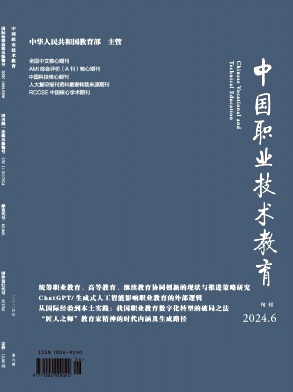
中国职业技术教育(不收版面费审稿费)
北核,科核,AMI核心,武A
CN中文-旬刊影响因子2.471
-

教育科学文献(英文)(Educational Science Literature)(国际刊号)
CN外文-月刊影响因子0
-
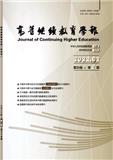
高等继续教育学报(不收版面费审稿费)(原:高等函授学报.自然科学版)
AMI扩,武B+
CN中文-双月刊影响因子0.695
-
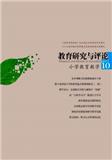
教育研究与评论(小学教育教学)(不收版面费审稿费)
AMI扩
CN中文-月刊影响因子0
-
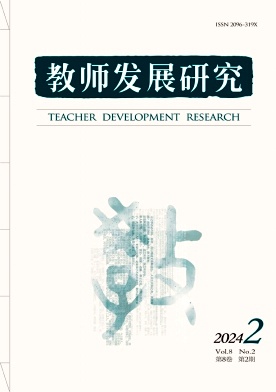
教师发展研究(原:北京教育学院学报(自然科学版))(不收版面费审稿费)
武A,AMI入库
CN中文-季刊影响因子1.339
-
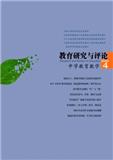
教育研究与评论(中学教育教学)(不收版面费审稿费)
AMI扩
CN中文-月刊影响因子0
-
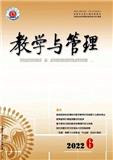
教学与管理(小学版)(不收版面费审稿费)
CACJ-权威,AMI扩,武B+
CN中文-旬刊影响因子1.304
-
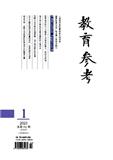
教育参考(原:素质教育大参考)(不收版面费审稿费)
AMI扩,CACJ-入库
CN中文-月刊影响因子0
常见问题
-
创业教育杂志社官网、联系方式是什么?
创业教育杂志社官网:https://link.springer.com/journal/41959
投稿网址:https://www2.cloud.editorialmanager.com/eedu
投稿邮箱:nh@zju.edu.cn470396996@qq.com(官网邮箱) -
创业教育杂志是核心期刊么?
创业教育不是核心期刊,级别是:, 是:教育分类下的知网目次收录的期刊。
-
请问你们是创业教育杂志社吗?
我们不是《创业教育》杂志社。本站主要从事期刊信息展示与期刊推荐,不是任何杂志官网,直投稿件请联系杂志社。本站仅提供免费的学术指导、论文辅导、期刊投稿信息整理收集服务。
-
你们指导服务后可以保证文章被发表吗?
期刊发表的成功与否,主要取决于文章内容的质量。编辑老师会根据研究领域、创新性等多因素进行考量。我们会帮助您理解期刊的发表要求,助力提升发表几率,从而增加发表的机会。
-
晋级论文能否在报纸上发表?
在学术界,论文的发表往往被视为研究者职业发展的重要一环。晋级论文,即为了获得更高职称或学术地位而撰写的学术论文,通常需在专业期刊上发表。然而,许多人可能会问
